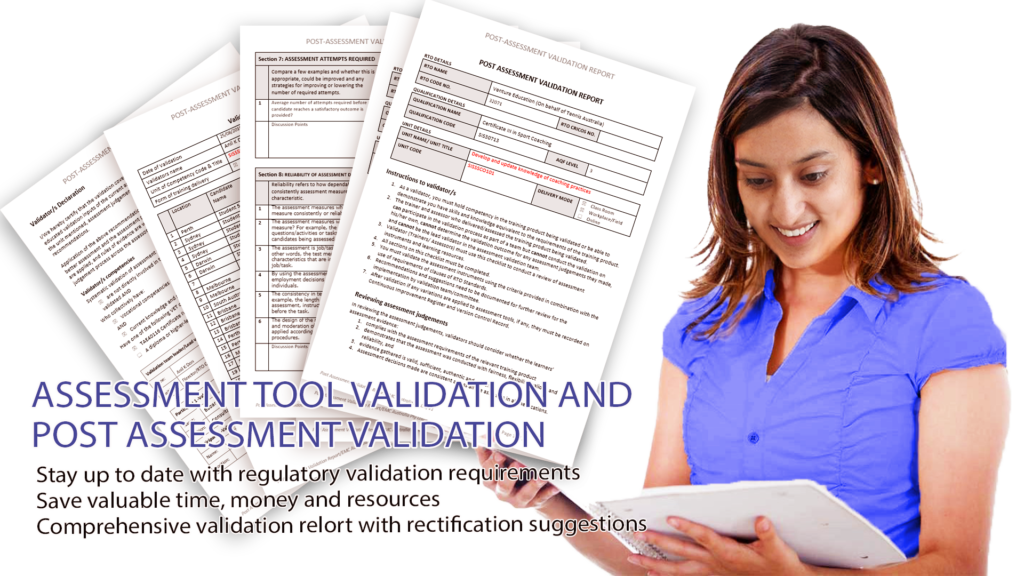
Dynamics expert team considers that the assessment validation is not just ticking boxes, producing checklists and reports. Dynamics do not conduct validation as just an activity you are undertaking because standard 1 clause 1.8 (1.9, 1.10, 1.11) requires “each training product to be validated at least once every five-years, with at least 50 per cent of products validated within the first three years of each five-year cycle, taking into account the relative risks of all of the training products on the RTO’s scope of registration, including those risks identified by the VET regulator.”
Dynamics conduct assessment validation purely for the purpose of improving the quality of assessment and the process as required by training package (Conducted in accordance with the Principles of Assessment contained in Table 1.8-1 and the Rules of Evidence contained in Table 1.8-2) including mapping with the unit descriptor elements, performance criteria, performance evidence, knowledge evidence and assessment conditions.
We identify gaps that are non-compliant and propose the rectification requirements in a fully structured follow through reports.
Review of assessment practice
Validation determine if assessment tools produce the intended evidence.
Validators look at the assessment tools, and determine if it is valid, reliable, evidence gathering is sufficient, work to be completed current and work completed ensure authenticity.
In reviewing assessment practice, validators consider whether the assessment tools:
- Comply with the assessment requirements of the relevant training product and ensure the principles of fairness, flexibility, validity and reliability are adhered to.
- Have been designed to produce valid, sufficient, authentic and current evidence
- Are appropriate to the contexts and conditions of assessment (this may include considering whether the assessment reflects real work-based contexts and meets industry requirements).
- Are appropriate in terms of the level of difficulty of the tasks to be performed in relation to the skills and knowledge requirements of the unit.
- Provide sufficient instruction to clearly explain the tasks to be administered to the learner (if the assessment samples demonstrate the evidence provided by each learner is marked different, this may indicate that instructions are not clear).
- Give sufficient guidance as to the evidence to be gathered from the candidate.
- Outline appropriate reasonable adjustments that could be made to the gathering of assessment evidence.
- Provide sufficient instructions for the assessor on collecting evidence, making a judgement, and recording the outcomes of the assessment.
- Are supported with evidence criteria to judge the quality of performance (if the assessment samples demonstrate the judgements made about each learner are markedly different, this may indicate that decision-making rules do not ensure consistency of judgement), and
- Adhere to the requirements of the RTO’s assessment system.

